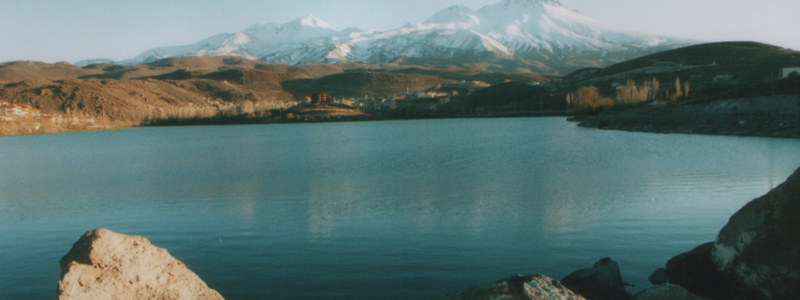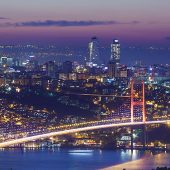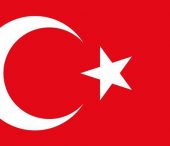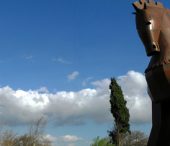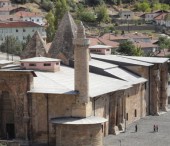Aksaray is a city in the Central Anatolia region of Turkey and the capital district of Aksaray Province. According to 2000 census, population of the district is 236,560 of which 129,949 live in the city of Aksaray. The district covers an area of 4,589 km² (1,772 sq mi), and the average elevation is 980 m (3,215 ft), with the highest point being Mt. Hasan at 3,253 m (10,673 ft).
History
Aksaray region was an important stopover along the Silk Road that crossed through Anatolia for centuries and the city of Aksaray has a long history.
The Roman town Garsaura was named Archelaïs by Archelaos, the last Cappadocian king. The region came under the control of the Seljuk Turks after the Battle of Malazgirt (Battle of Manzikert) and the Anatolian Seljuk Sultanate they founded left important landmarks in and around Aksaray. The Arab traveller Ibn Battuta who was in the region in the 14th century was impressed by the class of Muslim traders that had emerged in Aksaray and noted the urban center as a beautiful city, surrounded by waterways and gardens, with a water supply coming right to the houses of the city.
Historically, this was never an important city, living on the income generated by its location, situated at the crossroads of two transverse roads: Tarsus-Ankara and Konya-Sivas.
Aksaray was incorporated into the Ottoman Empire in 1470 by the İshak Pasha, and many inhabitants of the city were relocated in İstanbul, recently captured by the Ottomans, where they were settled in a quarter of the city that came to be named Aksaray.
Aksaray today
Today Aksaray is a quiet mid-size city. In recent past, many inhabitants migrated to Britain, Germany and other European for job opportunities.
Ihlara Valley and the other tourist attractions of Cappadocia are close, but as yet, Aksaray has not been very successful in attracting visitors to the city self. A new attraction in Aksaray city is Hünkarland, a large theme park with artificial waterfalls and which has immediately become a popular venue for Aksaray wedding parties.
Cuisine
This is a rich agricultural region producing grains, meat and dairy and many kinds of fruit and vegetables. Therefore the cuisine of the town is of high standard. Well-known dishes include many pastries and other kinds of wheat-based dishes such as:
yufka a thick filo-pastry, eaten like bread or filled with cheese (or meats and other fillings) and toasted on a hot griddle (sıkma, katmer or sac böreği depending on the filling)
many kinds of local pasta or cous-cous including one stuffed with meat and steamed like ravioli, (called mantı)
tarhana a soup made from a dried mixture of wheat-flour, spices and yoghurt
pelte and sweet of flour, syrup and butter
höşmerim, kaygana and many other rich sweets, mostly involving butter and flour
Other dishes include soups made with okra or yoghurt and a thick floury chicken stew called Arabaşı.
Places of interest
Hasan Dağı - a 3,000m volcano between Aksaray and Niğde, visible from the city.
Aşıklı Höyük - a burial mound 25 km (16 mi) east of the city of Aksaray.
Acemhöyük - an early Bronze Age settlement, 18 km (11 mi) north-west of the city of Aksaray.
The ancient Roman and Byzantine city of Nora, in the village of Helvadere near the city of Aksaray.
Ihlara - a canyon, 40 km (25 mi) from the city of Aksaray, contains ancient churches, (9th century and earlier) carved into the valley walls and decorated with frescoes.
Ervah cemetery in the city contains the tombs of 14th century Islamic leader Somuncu Baba and the scholar Cemaleddin'i Aksaray.
Zincirye Medresi, a Koranic school with a typical Seljuk portal, built by the Karamanoğullari emir in 1345
Mosques
Karamanoğlu Camii - a large mosque in the city centre.
Eğri Minare (Oblique Minaret) - a Seljuk Turkish minaret 1221-1236, built under the rule of Aläettin Keykubat I
The high church - on a steep rock 3 km (2 mi) from the city.
Caravanserais
There are three monumental caravanserais in the neighbourhood of Aksaray. The best known is Sultanhanı, located in the village Sultanhan about 40 km (25 mi) west of Aksaray. This fortified structure was built in 1229 (dated by inscription), during the reign of the Seljuk sultan Kayqubad I, by the Syrian architect Mohammed Bin Havlan El Dimaski (the work Dimasci indicating Damascus) along the trade route from Konya to Aksaray, leading to Persia (the Uzun Yolu). After it was partially destroyed by a fire, it was restored and extended in 1278 by the governor Seraceddin Ahmed Kerimeddin bin El Hasan during the reign of the sultan Kaykhusraw III. This monumental caravanserai then became the largest in Turkey. It is one of the best examples of Anatolian Seljuk architecture.
One enters the Sultanhanı in the east through a monumental 13 m high marble gate (pishtaq) projecting from the fifty-meters wide front wall. The gate is enclosed by a pointed arch decorated with muqarnas corbels and a plaiting with elegant geometric patterns. The open courtyard (44 x 58 m) was used in the summer, while the covered ones (iwans) on both side were used during the winter. In the middle of the open courtyard stands a square stoned kiosk-mosque (kösk mesçidi), the oldest example in Turkey. The mosque on the second floor sits on a construction of four carved barrel-vaulted arches. The arcades on both sides of the inner courtyard served as stables and has accommodations above.
At the other side of the courtyard is another arched entrance. It is equally decorated with a muqarnas niche, joggled voussoirs and interlocking geometric designs. The central aisle of the covered hall is covered with a barrel vault with transverse ribs. A short tower, capped by a dome, stands over the center of the vault. This dome has an oculus, providing light and air to the hall.

